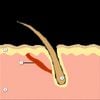community Rhamnose-Mediated Modulation of Hair Follicle Growth: Insights from Chemical Genomics
Rhamnose may promote hair growth and pigmentation, suggesting it as a potential hair loss treatment. The conversation discusses its potential alongside known treatments like Minoxidil, finasteride, and RU58841.

